Trust is everything.
Without it, people won’t even consider purchasing your products. In other words, in ecommerce, to neglect trust is to ensure failure.
But here’s the problem: Trust is extremely difficult to build.
And to make matters worse, it’s especially difficult to build online. Without genuine, face-to-face interaction, you must rely on your website and social media to build trust instead.
So they better be good.
As famed computer scientist Paul Graham said, “Overall the web is pretty sloppy, but an online store can’t afford to be.”
So how can you set up your website to effectively build trust and increase sales? Here are nine strategies and tactics to start using today.
Post Contents
- 1. Sweat the Small Stuff
- 2. Proudly Flaunt Social Proof
- 3. Reassure Visitors That You Take Security Seriously
- 4. Emphasize Your Incredible Return Policy
- 5. Provide Samples
- 6. Provide Detailed and Accurate Product Information
- 7. Create a Personal Connection
- 8. Establish Yourself as an Authority Through Content
- 9. Address Concerns with a Detailed FAQ Page
- Summary
- Want to Learn More?



1. Sweat the Small Stuff
Ever heard the expression, “Take care of the little things and the big things will take care of themselves”?
Make sure to pay close attention to the little things that erode trust, things like:
- Pages that load slowly
- Broken links
- Spelling errors
- A cluttered, messy design
- Unprofessional, poor quality images and graphics
- Confusing shipping times or prices
These things may seem trivial, but they create a sense of unease, erode trust, and ultimately, hurt conversion rates.
Does your website have any of these issues?
Get critical and look for seemingly small problems to iron out. Better yet, ask other people with a more objective eye to point out any room for improvement.
Then get to work.
For instance, if your store is loading slowly, use a tool like PageSpeed Guru to increase the speed.
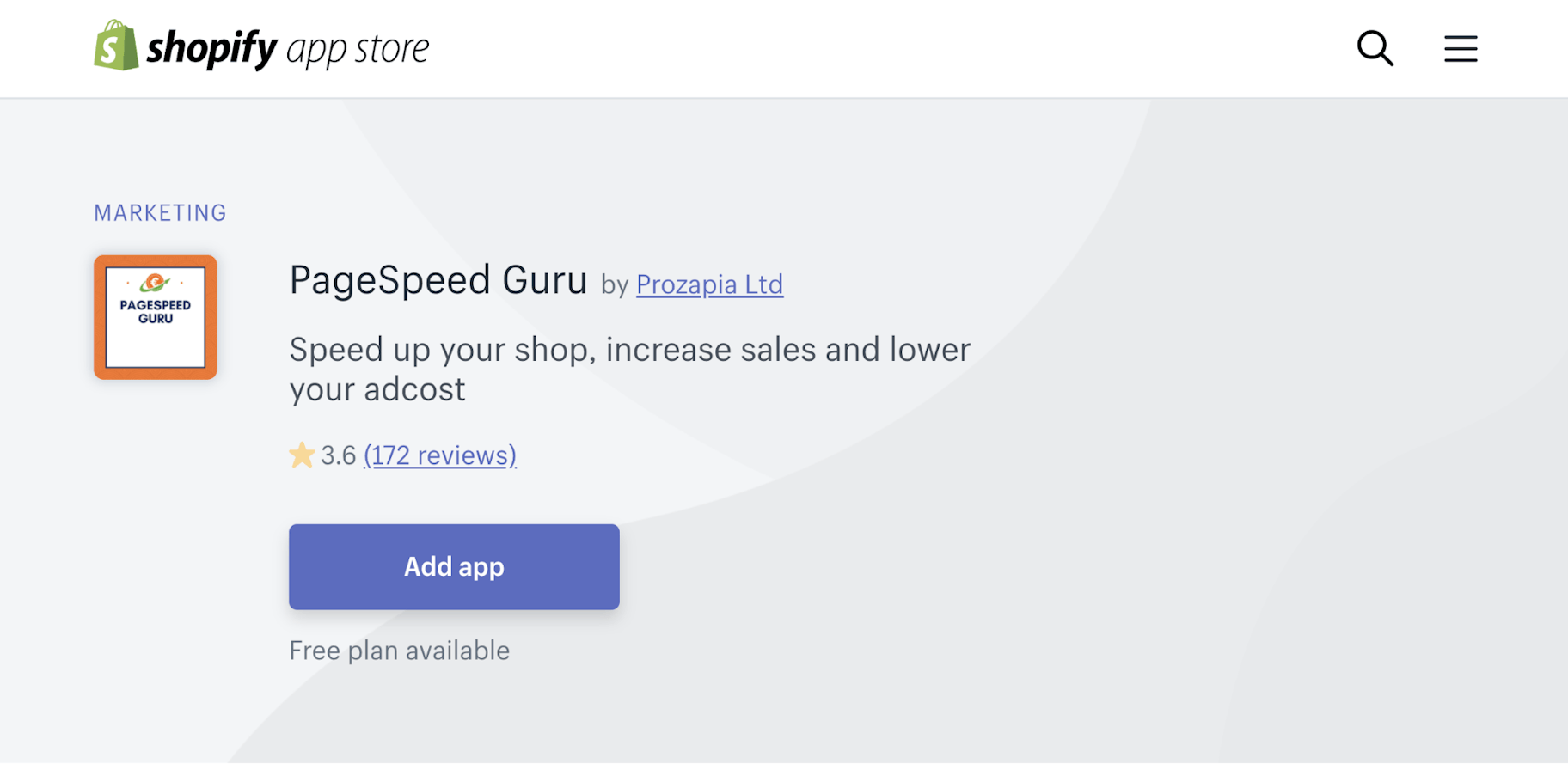
You can also make sure your images are fully optimized and not slowing your store down by using an app like Image Optimizer.
Look to improve your store’s design with an impressive Shopify theme.
Next, go through each of your pages one-by-one, and click every link to make sure they all work properly.
You can also use an online tool like Grammarly to highlight any errors in your text.
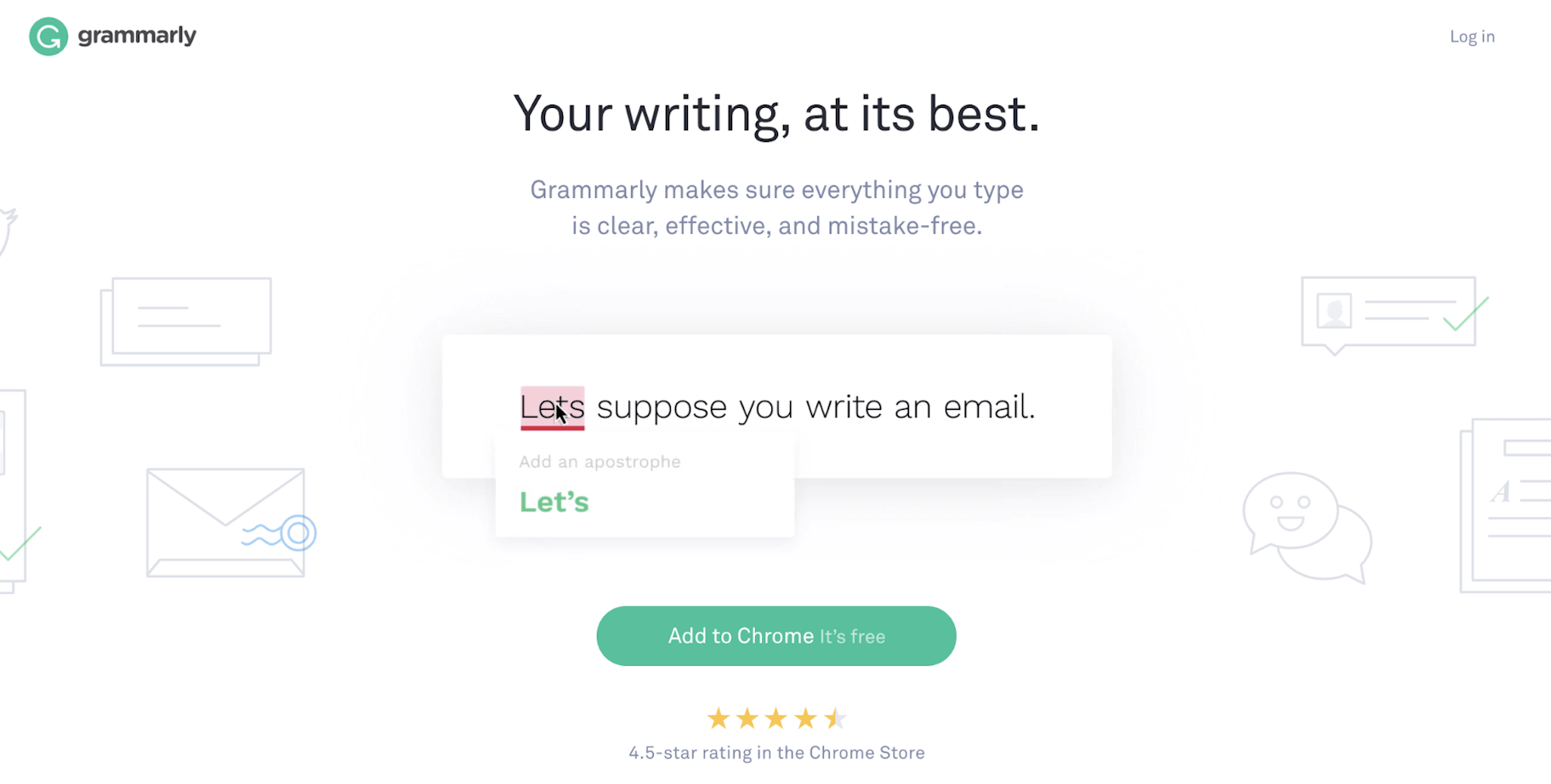
Don’t neglect the little things.
As Amazon founder Jeff Bezos said, “We see our customers as invited guests to a party, and we are the hosts. It’s our job every day to make every important aspect of the customer experience a little bit better.”
2. Proudly Flaunt Social Proof
What is social proof?
Social proof is a term coined by Robert Cialdini in his book, Influence. It refers to the simple fact that people are influenced by other people’s opinions and actions.
Reviews and testimonials are the purest forms of social proof.
Andy Crestodina, the co-founder of Orbit Media Studios, said it best: “When you say it, it’s marketing. When your customers say it, it’s social proof.”
Take men’s grooming brand Beardbrand.
Their product pages clearly show the overall customer rating for each product.
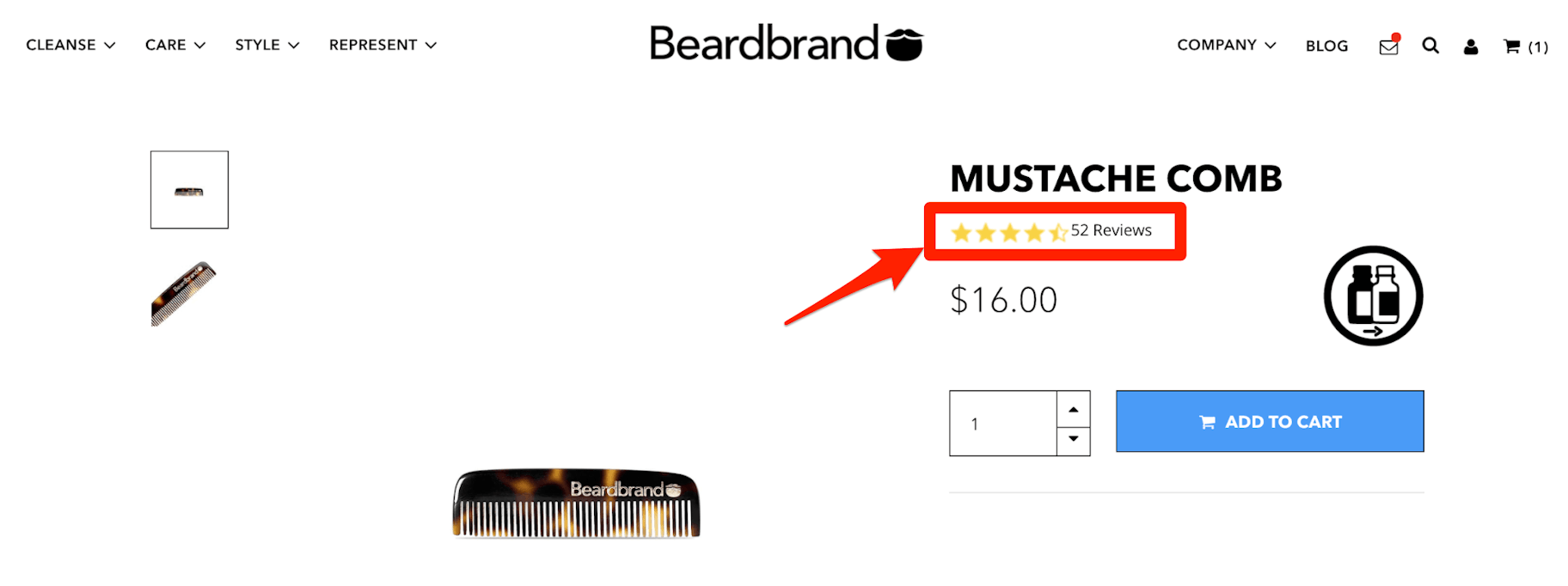
Plus, when you click on the rating or scroll to the bottom of the product page, you can read individual reviews, and sort them by rating.
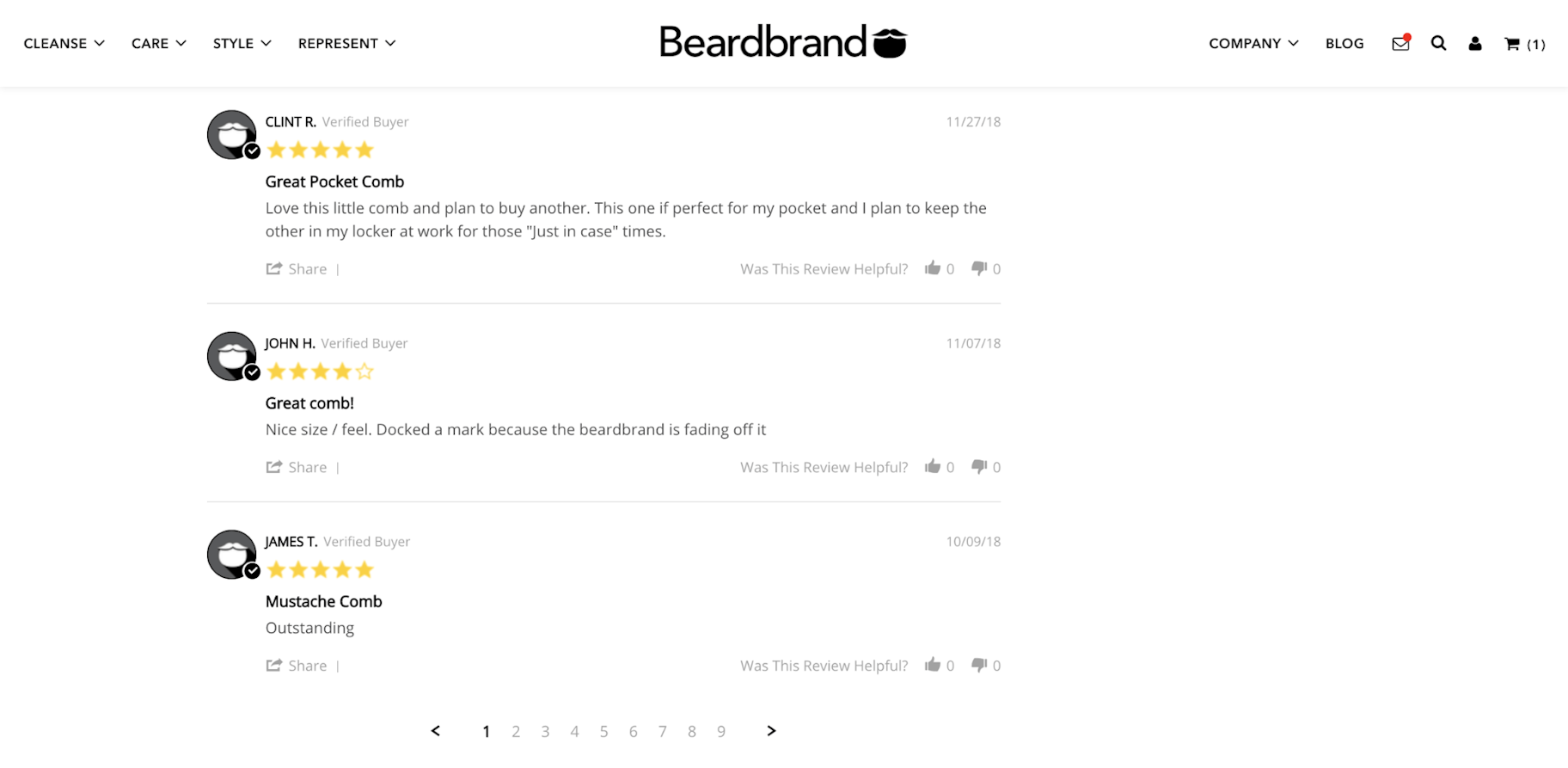
Home and bedroom brand Au Lit Fine Linens takes this a step further by prominently displaying impactful reviews on their website’s homepage. This allows them to build trust with first-time visitors the instant they arrive.

Headphone and speaker maker Master and Dynamic showcases social proof in the form of reviews from popular publications.
The inclusion of each publication’s logo helps visitors immediately grasp the level of endorsement that Master and Dynamic have acquired.
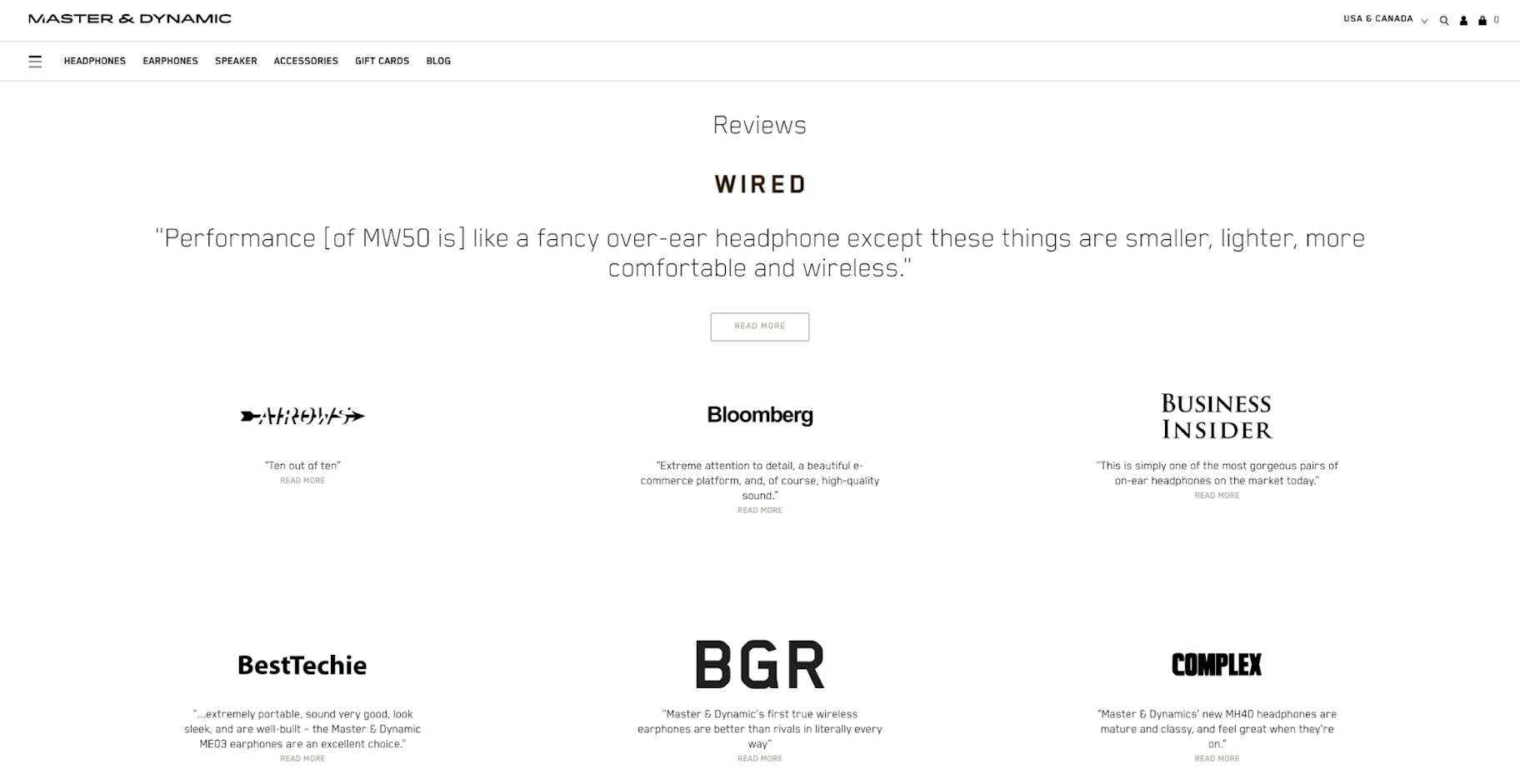
However, you display social proof on your website, make sure you’re harnessing this powerful persuasion technique.
But, what if you don’t yet have any social proof to display?
If you’re new to ecommerce or are about to launch a store, it’s likely you won’t have any reviews, testimonials, or endorsements.
Don’t sweat it.
Just make sure that you’re encouraging your first customers to leave reviews after they purchase so you can start using social proof as soon as possible.
And in the meantime, work on using the other strategies and tactics in this list.
To learn more about social proof, check out Social Proof: What It Is and Why It’s Great for Marketing.
3. Reassure Visitors That You Take Security Seriously
Cybersecurity is a massive issue and not to be taken lightly.
Information leaks and hacks can expose people’s personal and financial details, which can lead to theft, fraud, or even stolen identities.
So it’s no surprise that 95 percent of Americans are concerned about how companies use their data.
As a result, before they purchase items from your store, buyers must trust your website enough to feel okay about potentially exposing themselves to these risks.
So how can you put shoppers at ease?
To start, make sure you’re using a payment system which is genuinely secure and that will be familiar to visitors, such as Stripe, PayPal, or Apple Pay.
Then, be sure to highlight the use of these trusted brands.
In the example below, women’s fashion brand Five Story display the logos of trustworthy payment options, along with a padlock icon and the text “Payment 100% Secure.”
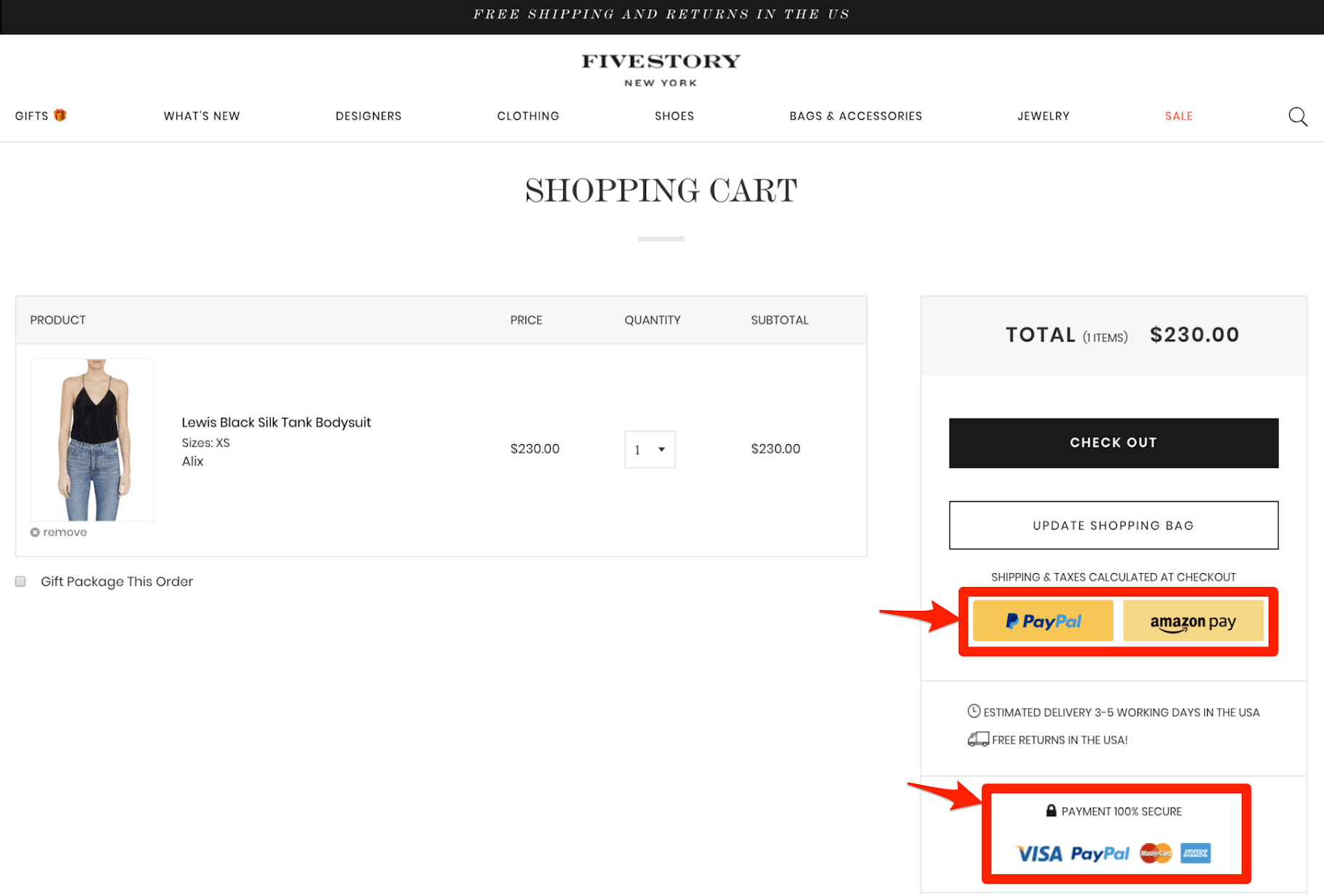
What’s more, Five Story also display the logos of trusted payment solutions in the footer of their website, such as Visa and Mastercard.

If you use Shopify to power your online store, it’s simple to activate these logos in the Shopify backend:
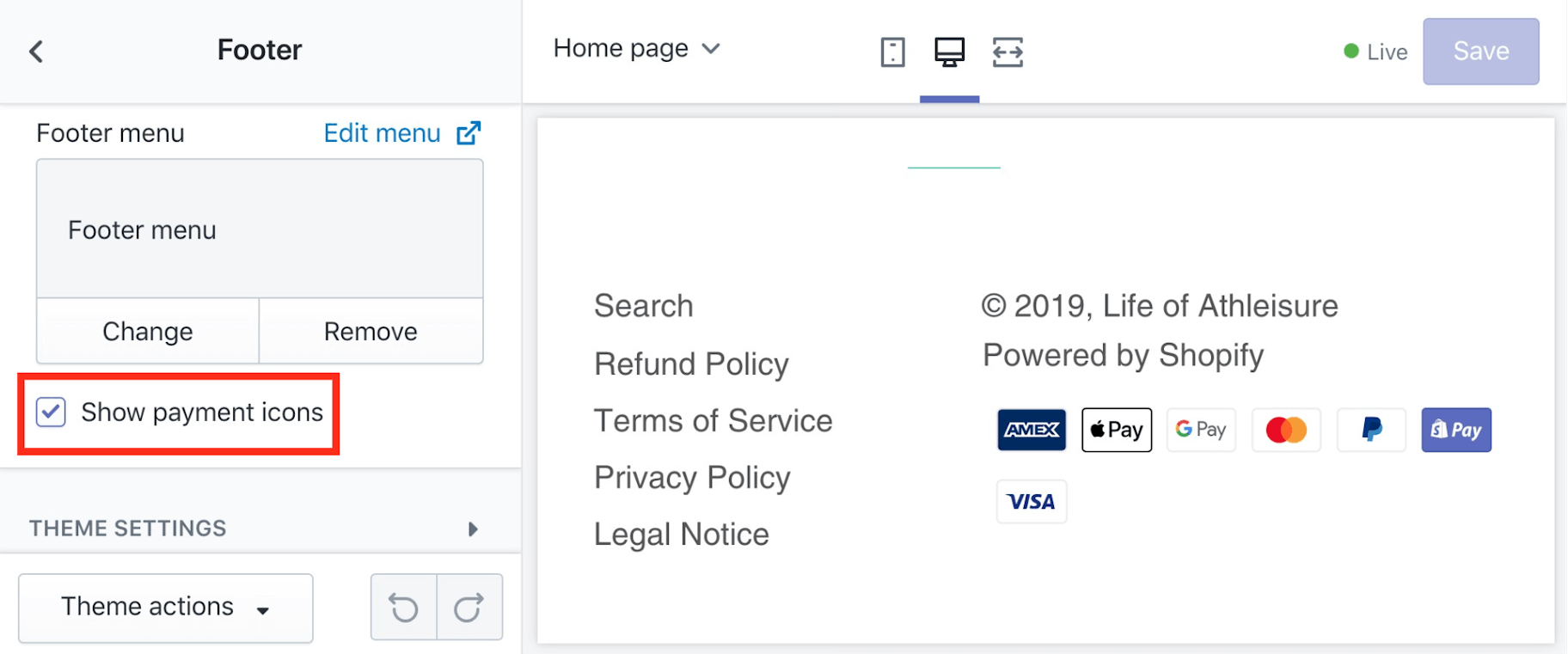
Next, use an app like McAfee Secure to automatically scan your site for malware, viruses, and other malicious activities. Then, you can display the McAfee Secure badge to show visitors your site is secure.
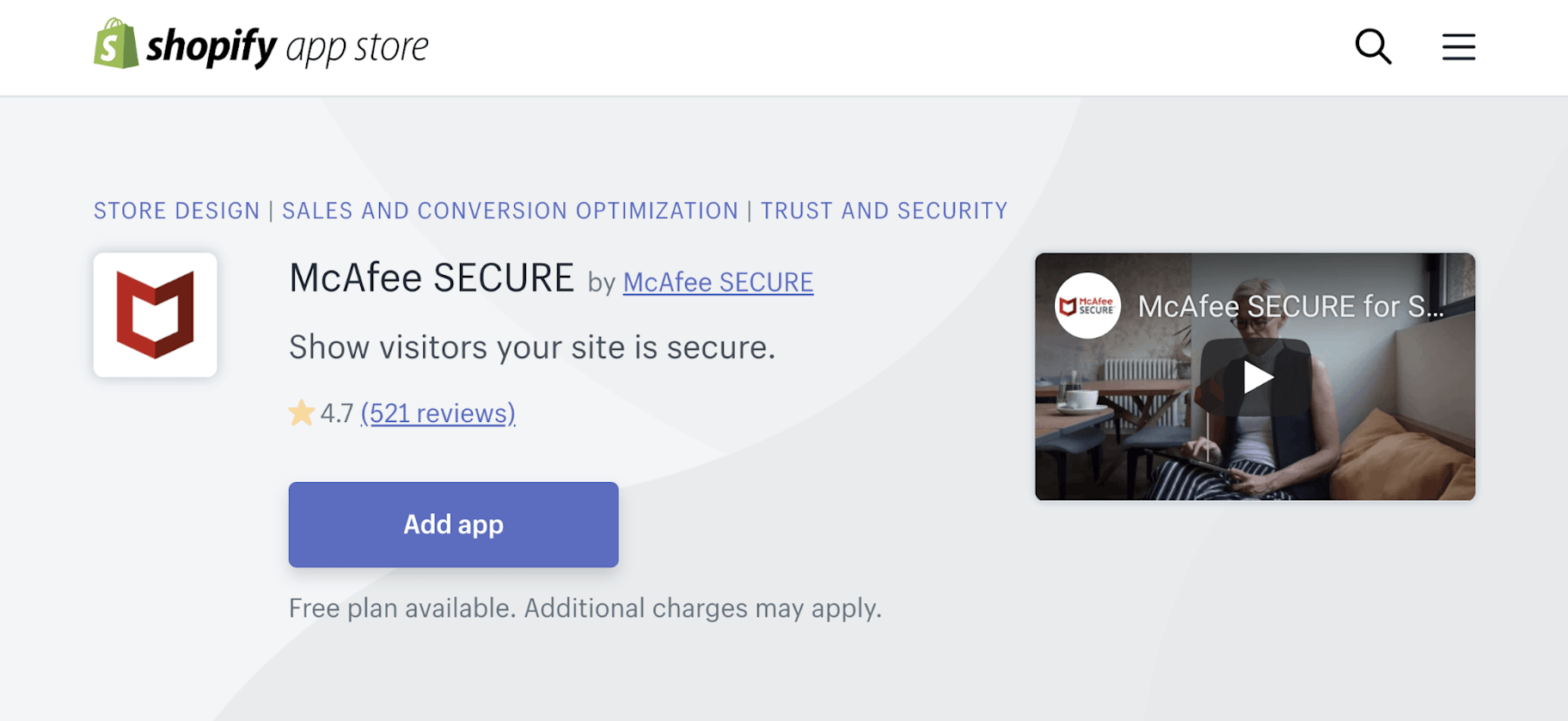
To add another dollop of reassurance, you can also display other trust badges on your website, such as the Shopify Secure badge or those provided by apps like Trust and Trustful.
Bottom line, take security very seriously and make it clear that your customer’s information is safe in your hands.
4. Emphasize Your Incredible Return Policy
Acrobats like safety nets. Customers like great return policies.
A great return policy removes the risk that customers take when purchasing your products. If they don’t like it? No big deal. If it breaks? No big deal.
Plus, generous and transparent return policies inspire confidence.
They say, “We’re so confident that you’ll love our products that if you don’t, you can return them at any time – we’ll even pay for the return shipping.”
So create a return policy to be proud of.
Then, make sure it’s displayed prominently throughout your website so that any visitor is instantly aware of it.
For example, highlight your dropshipping return policy on your product pages and checkout page. In the example below, Target Dry does a great job of this on their product pages:
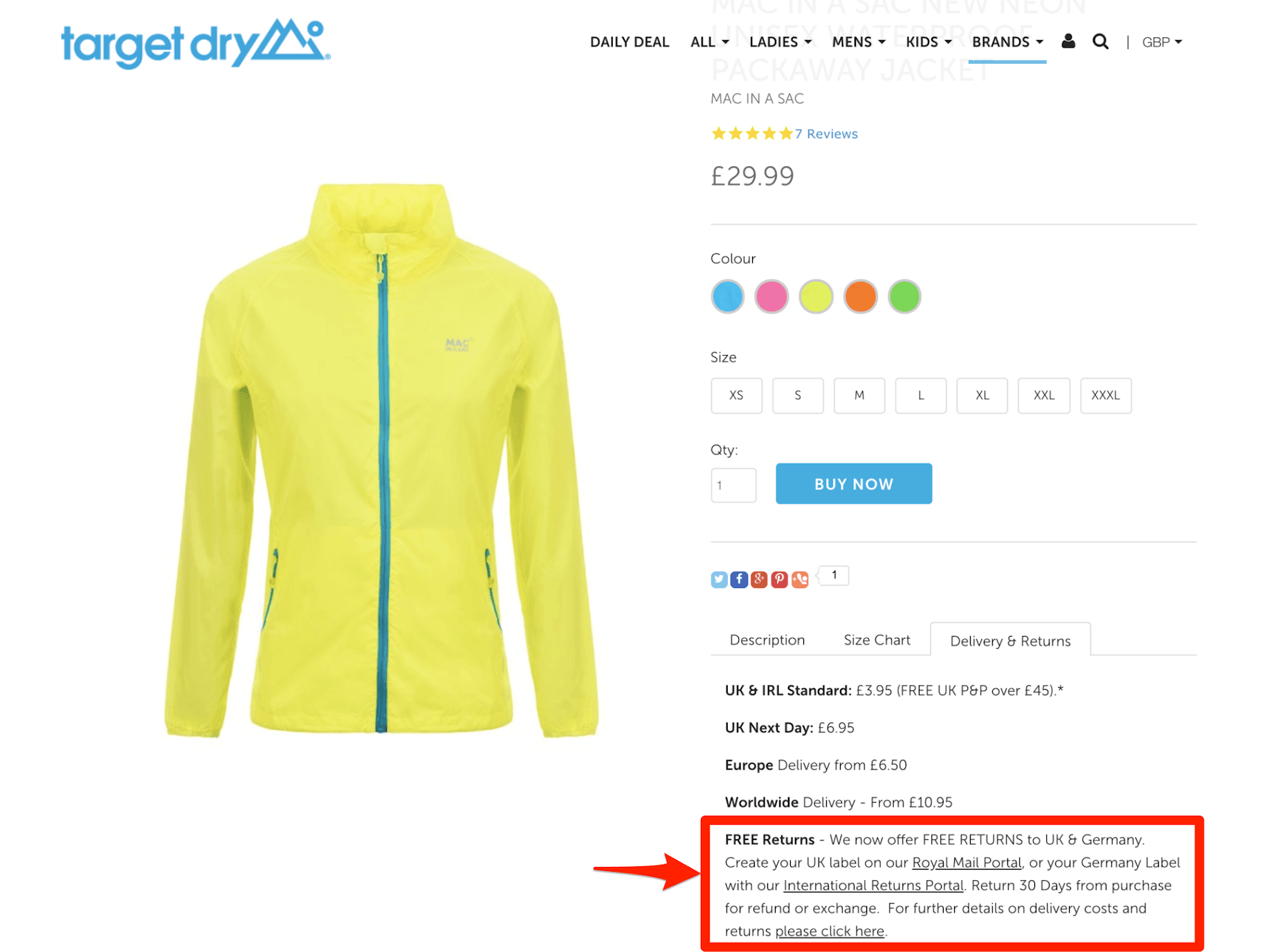
Next, create a dedicated page explaining in simple language the terms and benefits of your return policy. Then, make sure to add a link to it in your website’s footer.
Don’t underestimate the power of a generous return policy. Make sure yours effectively minimizes risk for the customer and that visitors are aware of it.
5. Provide Samples
If you’re new to ecommerce or are struggling to build trust to land those first few sales, consider providing samples.
Why?
Well, a great return policy minimizes risk, but samples remove risk entirely – the customer literally has nothing to lose!
They can “try before you buy”!
Let’s look an example from glasses brand Warby Parker.
Deciding on the right style and fit of glasses is often a very personal choice. So not many shoppers are likely to want to purchase glasses without trying them on first.
Warby Parker’s solution is to provide samples through their Home Try-On program.
This allows shoppers to select up to five different frames that are shipped to them. Then, they have 5 days to try on the frames to help them make a decision before they must send them back.
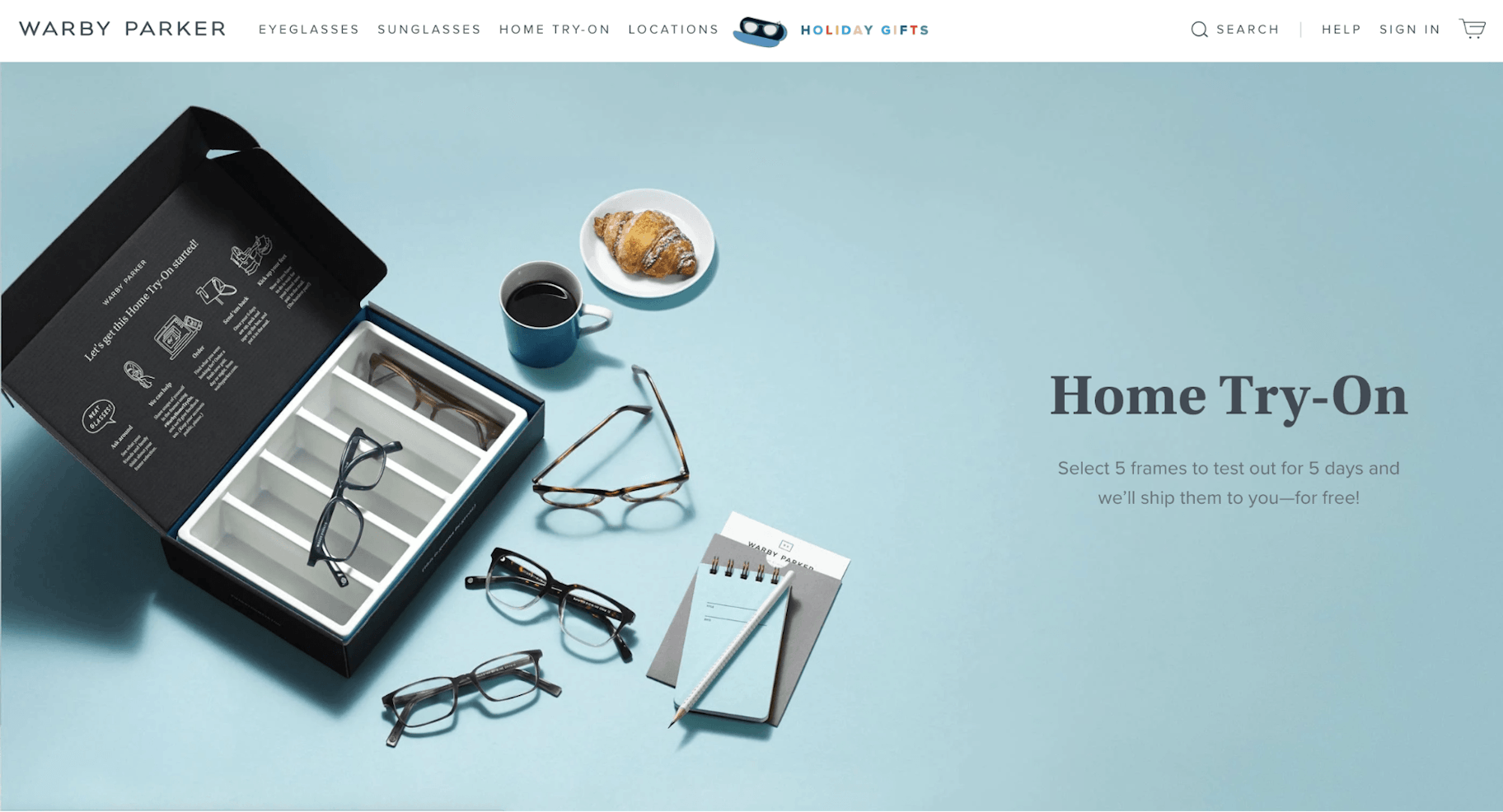
Giving away free samples works particularly well for brands selling consumables and ongoing purchases, such as razor blades or skincare products.
Sure, it will cost you initially, but by offering customers the chance to try before they buy, you can hook in repeat customers which can lead to huge profits down the line.
Another benefit of giving away free samples is the opportunity to collect reviews.
This is especially useful for new stores. Consider giving away a set number of products in exchange for fair and honest reviews. Then you can display these on your website as a form of social proof.
But that’s not all.
You could also provide free samples to influencers in your niche in exchange for a shout out or mention on their social media channels.
This is a great way to reach your target audience, build trust through an endorsement, and increase traffic to your website.
Providing samples to potential customers is a great way to show confidence and build trust.
Just make sure to calculate the costs involved. You need to be able to maintain profitability or endure the period of investment in the hopes that it will pay off in the future.
6. Provide Detailed and Accurate Product Information
In a physical store, shoppers can pick items up, inspect them, try them on, and even ask the sales assistant questions.
Online, it’s a little more difficult to investigate.
To make up for this, you need to make sure you provide detailed and accurate information about your products. You should also include plenty of great product photos.
Ideally, you could also create product videos that showcase the features and benefits on offer.
Basically, if there’s something a potential customer might want to know, it should be included on your product page.
This helps to remove risk and increase trust by helping shoppers to make informed decisions.
Check out cocktail mixer maker Bittermilk.
Their product pages tell you everything you need to know about their mixers. In the example below, you can read about how they make the mixer, recommended pairings, the ingredients, notable publication features, and even the awards it has won.
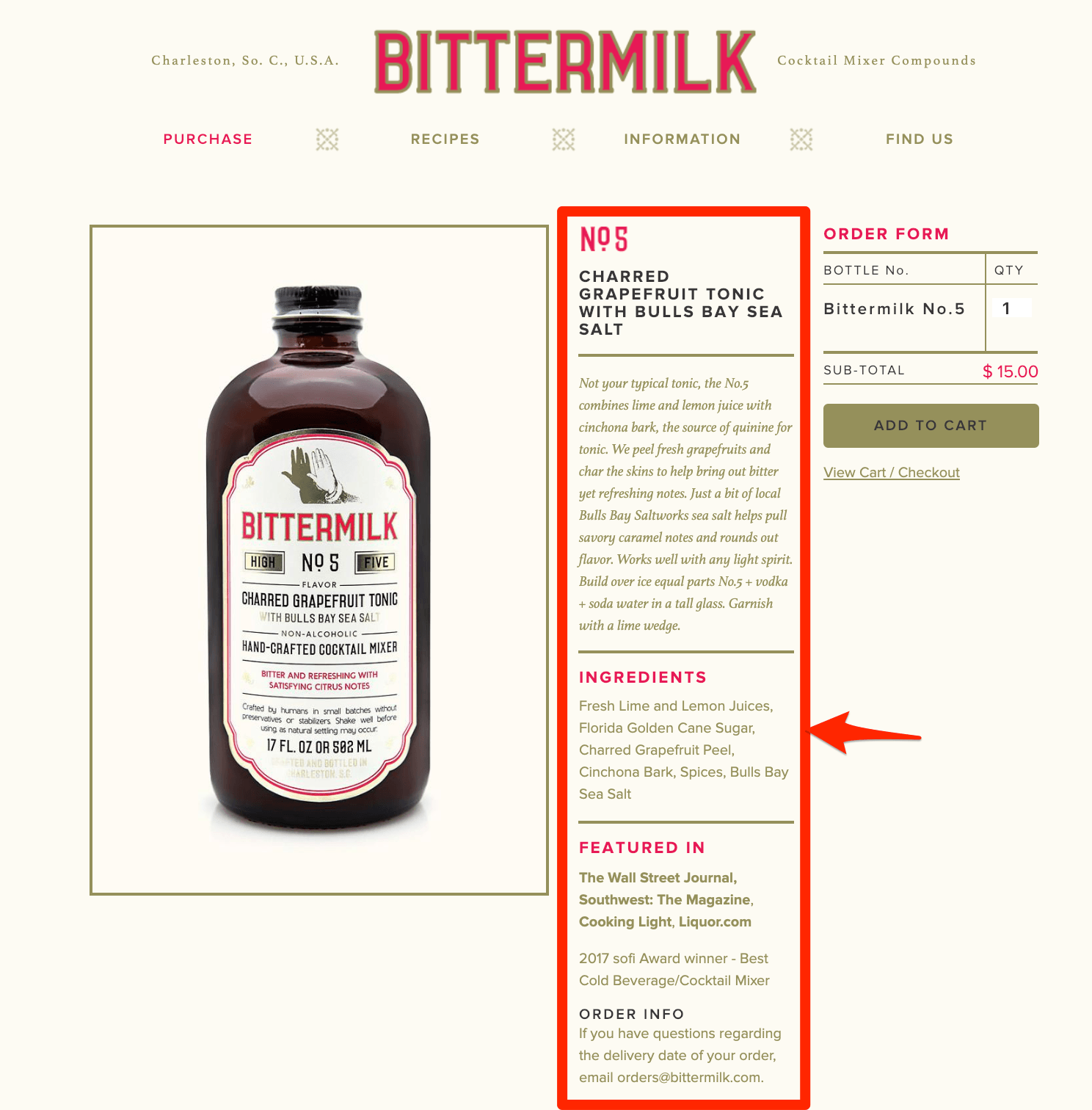
Plus, Bittermilk doesn’t leave anything to chance – they end their product description with an email address that visitors can use to get in contact.
So get specific.
Let shoppers know the exact size, weight, and dimensions. Explain how the product was made. Tell them about the ingredients or materials used.
Dig deep.
Don’t just say “Size Medium” – provide the exact measurements for each of your sizes in a simple chart and include a video of someone wearing it for perspective.
Leave no stone unturned and no question unanswered. Every visitor should feel confident in what it is they’re buying.
For more help, check out How to Create a Great Product Page.
7. Create a Personal Connection
Who do you trust more, a friendly neighbor or a friendly corporation?
Put simply, the more we know and like someone, the more likely we are to trust them. Sure, it seems obvious, but are you putting this concept to use for your business?
So how can you create a personal connection with your website visitors? Well, you can start by showcasing the people behind the brand.
One of the easiest ways to do this effectively is to create an About Us page.
This page is all about the people and stories that that led to the creation of your store. It should clearly represent the personality and values underpinning the business.
In this example, sneaker company Greats presents a shot of the founders and the vision they shared that led to them starting their business.

In another example, snack brand Pip Snacks tell the story of a family enterprise that’s “on a mission to do things differently.”
Even without reading the story, the friendly photograph of the team instantly creates a human connection and helps to build trust with visitors.

You can also work to create a personal connection using your website copy, by using language that will resonate with your target audience.
Take a look at how Pip Snacks does this by including sentences like, “Dear Truffle Pipcorn admirer, we want to start out by telling you… yes, the hype is real!”
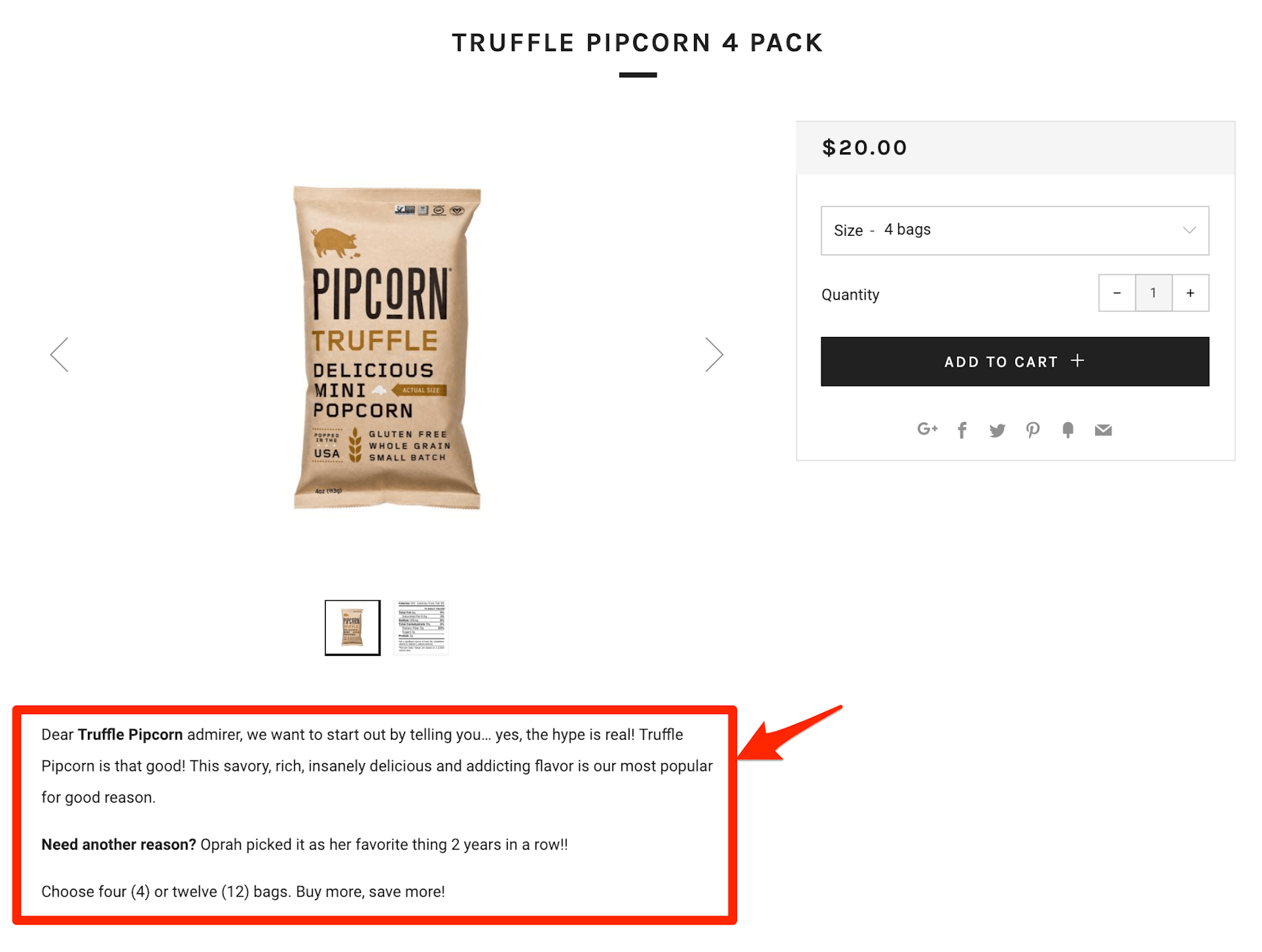
8. Establish Yourself as an Authority Through Content
Shoppers often gravitate to the market leader simply because, well… they’re the market leader!
Even if the market leader doesn’t have the best product, service, or prices, they are seen as an authority in the niche.
This leads to an increase in trust.
Which begs the questions: If you’re not the market leader in your niche, how can you improve the odds of being taken seriously as an authority?
In a word: Content.
Content marketing is the process of creating useful and insightful content that appeals to your target market.
It isn’t salesy or pushy. It simply aims to deliver value and build a relationship with the visitor. This article you’re reading is content marketing.
There are tons of different types of content that you can create, such as blog posts, videos, infographics, or ebooks. You can use these mediums to demonstrate your knowledge and expertise, all while entertaining your target market or helping them to accomplish their goals.
In short, shoppers are more likely to trust your brand if it’s clear that you know what you’re talking about.
Let’s look at an example from bike brand Pure Cycles.
They regularly create quality articles and videos for the cycling community which help to establish them as an authority.
In the image below, you can see a video they created to teach visitors everything they need to know about road bikes.
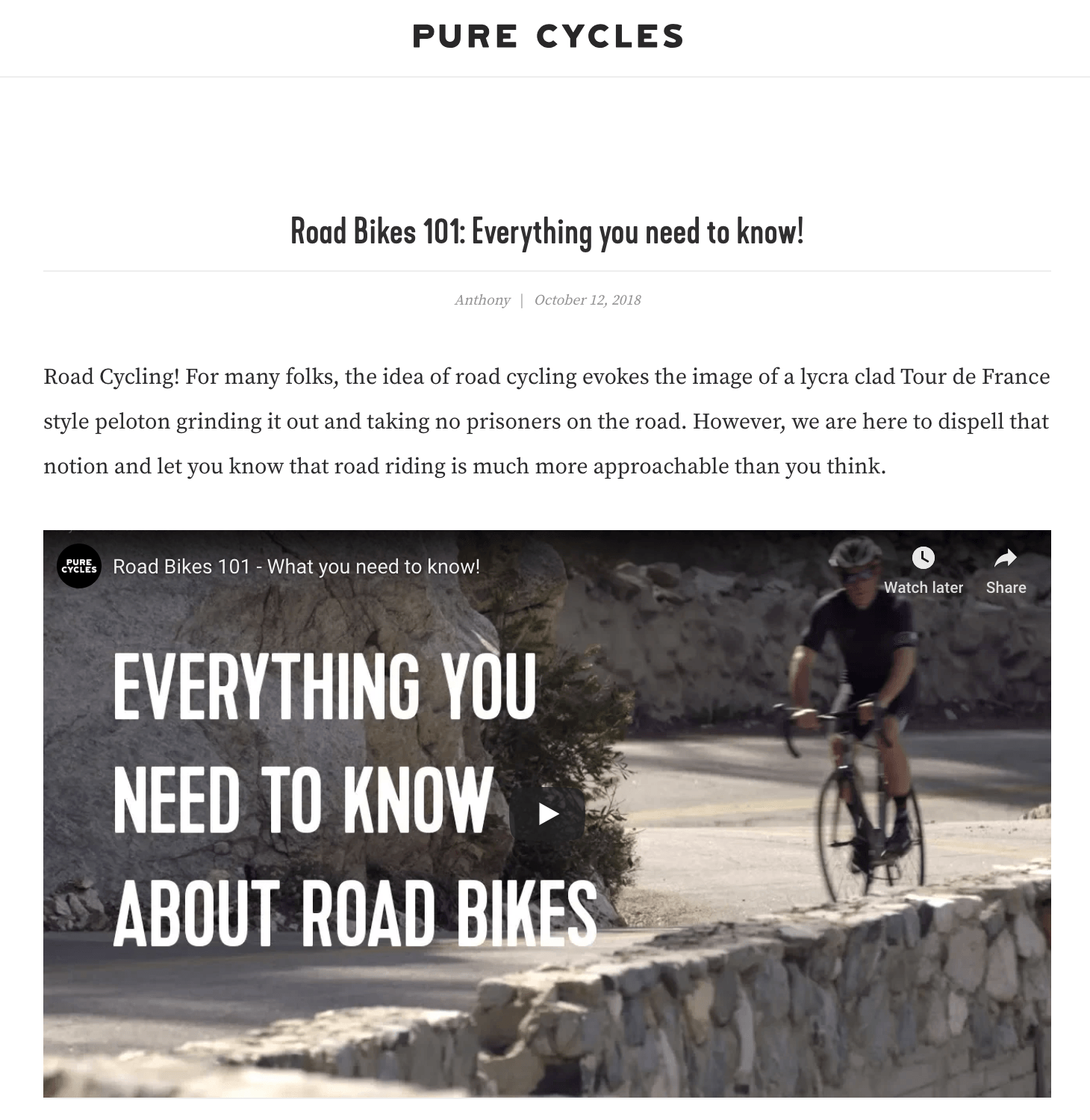
What’s more, content is a great way to directly engage with your target audience.
By sharing your content on social media and encouraging viewers to leave comments, you get the opportunity to reply and connect with individuals in your target audience. This demonstrates your dedication to serving your target market and highlights the personal side of your brand.
9. Address Concerns with a Detailed FAQ Page
Your customers should never feel confused. Every stage of the transaction should be simple, clear and reassuring.
This is where an FAQ page can help.
If you’re struggling to include detailed shipping or return information on your product pages, create a page which answers frequently asked questions.
This helps to build trust by removing uncertainty.
Apparel brand Rebel 8 has a fantastic FAQ page. It’s easy to browse and clearly answers questions commonly asked by shoppers.
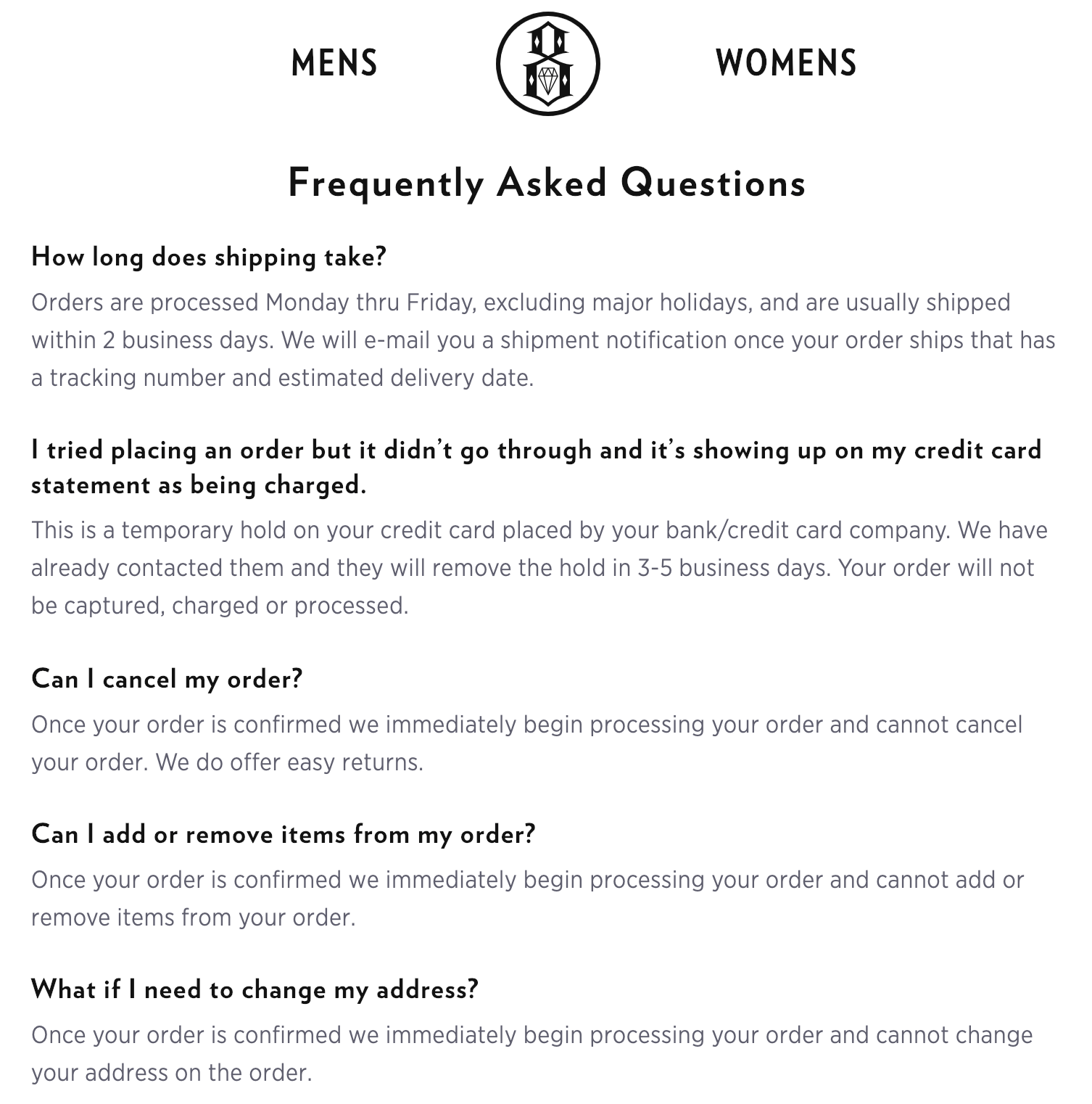
If you’re just starting out, begin by covering basic questions, such as:
- How long does shipping take?
- Can I cancel my order?
- Can I change my order?
- What’s the return policy?
- Can I track the delivery of my order?
- What happens if my order is lost in the post?
Then, you can make a note of any other frequently asked questions over time to add to your list. So make sure to revisit and improve your FAQ page regularly.
Summary
Trust is essential. Without it, no one will buy from your store.
What’s more, trust is particularly difficult to build online. In an environment without face-to-face relationships, ecommerce store owners must work extra hard to create a website that builds trust with visitors.
To summarize:
- Small errors erode trust: Use tools like Grammarly and Pagespeed Guru to smooth out any rough edges on your website.
- Social proof is powerful: Harness reviews, testimonials, and endorsements to instantly create trust with visitors.
- Showcase your dedication to security: Use trust badges and trusted payment solutions to put shoppers at ease.
- Reduce risk with a generous return policy: Show confidence in your products and service, and make sure your visitors know about your policy.
- Remove risk entirely by proving samples: Allow customers to try before they buy, or give away free samples in exchange for reviews or exposure.
- Don’t neglect the details: Provide rich and detailed information about your products so your customers can feel comfortable making informed choices.
- Get personal: Showcase the human side of your brand and create a personal connection.
- Promote your expertise and knowledge: Create content that establishes you as a trusted authority in your niche.
- Eliminate confusion with a detailed FAQ page: Start with the basics and continually update your FAQ page to provide all of the information shoppers may want.
How trustworthy is your website? How many of these nine tactics and strategies are you currently using? Let us know in the comments below!






